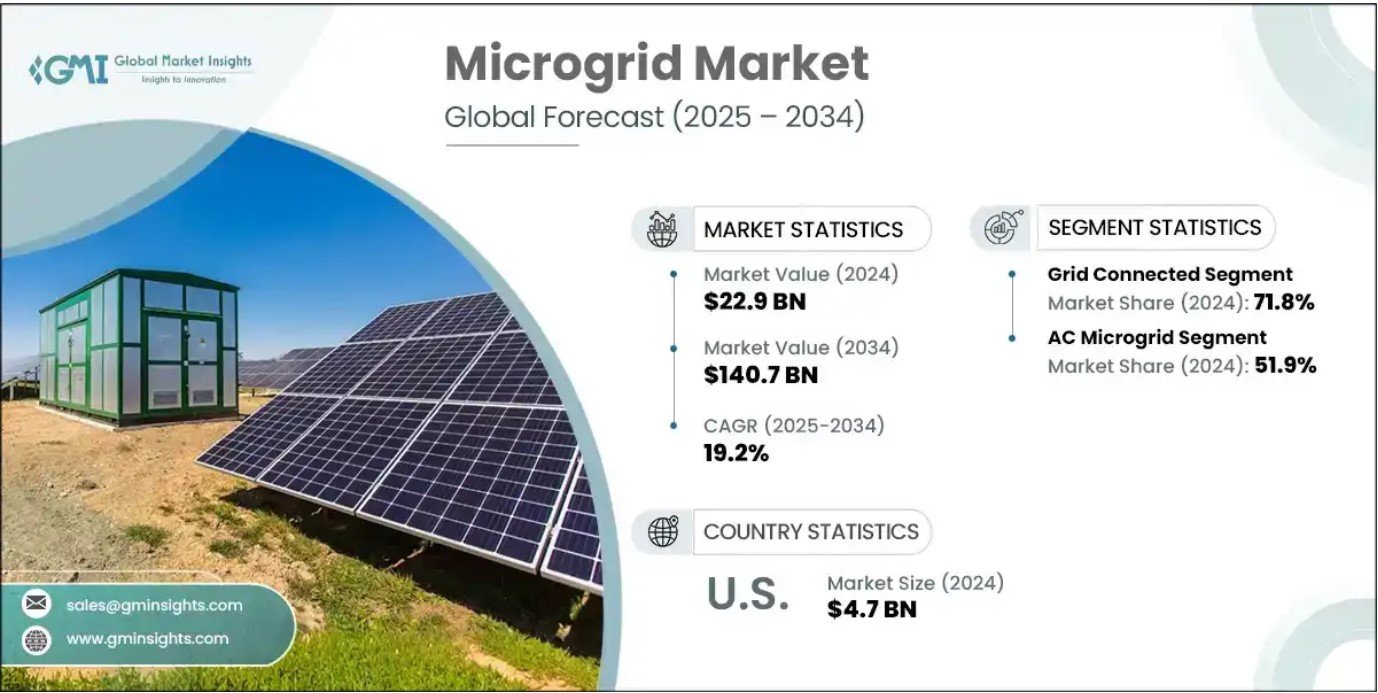
In an era where energy resilience, sustainability, and technological innovation are paramount, microgrids have emerged as a transformative solution in modern power infrastructure. The global microgrid market is witnessing robust growth, driven by a combination of environmental, economic, and policy-based factors.
What is a Microgrid?
A microgrid is a localized group of electricity sources and loads that can operate independently or in connection with the main power grid. It enhances energy reliability, supports renewable energy integration, and offers a backup during grid failures — all while enabling better energy cost management.
Market Outlook: Set for Explosive Growth
According to industry estimates, the microgrid market size exceeded USD 22.9 billion in 2024 and is projected to surpass USD 140.7 billion by 2034, expanding at a CAGR of over 19.2% during the forecast period. This surge is fueled by rising investments in renewable energy, increasing occurrences of grid failures, and growing demand for remote and off-grid energy solutions.

Key Growth Drivers
1. Energy Resilience & Grid Modernization
Natural disasters, cyber threats, and aging transmission infrastructure are exposing vulnerabilities in traditional grids. Microgrids offer decentralized, reliable power and ensure continuity of supply during outages, especially for critical infrastructure like hospitals, military bases, and data centers.
2. Integration of Renewable Energy
With global decarbonization goals accelerating, microgrids are playing a crucial role in integrating solar, wind, and storage systems. They provide a platform for cleaner energy generation while ensuring reliability through real-time load balancing.
3. Electrification of Remote & Rural Areas
In developing regions, extending the main grid is costly and technically challenging. Microgrids offer a cost-effective and modular solution to electrify isolated communities, enabling economic and social development.
4. Supportive Government Policies & Funding
Government-backed initiatives, such as the U.S. Department of Energy’s microgrid programs and Asia-Pacific rural electrification efforts, are bolstering project deployments and R&D activities worldwide.
5. Technological Advancements
Smart grid technologies, advanced energy management systems, and AI-based predictive analytics are enhancing the efficiency, automation, and scalability of microgrids. This makes deployment more attractive across commercial, industrial, and institutional sectors.
Regional Insights
• North America leads the market due to favorable regulations and rising investments in clean energy infrastructure.
• Asia Pacific is poised for rapid expansion, driven by rural electrification efforts in countries like India, China, and Indonesia.
• Europe focuses on enhancing grid stability and integrating renewables through advanced microgrid frameworks.
Future Outlook
As energy systems evolve toward decentralization and digitalization, microgrids will become a cornerstone of sustainable power infrastructure. Their ability to adapt to variable generation sources, reduce carbon footprints, and increase energy security ensures that microgrids are not just an option — they’re the future of energy.



